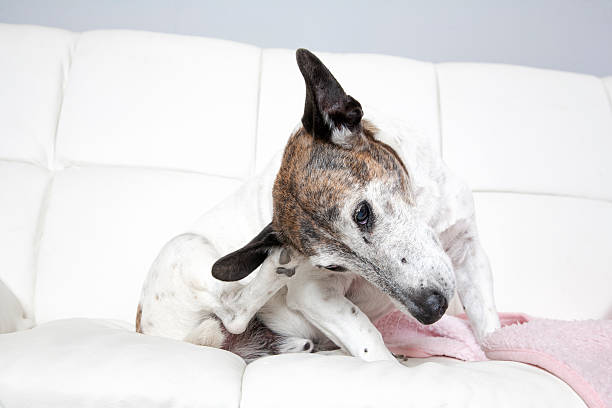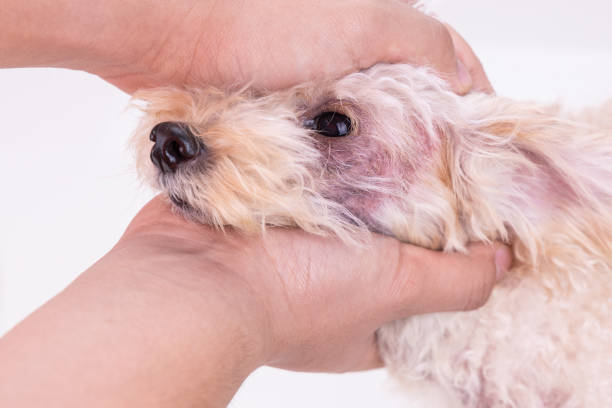Dogs’ visual abilities within the realm of the animal kingdom are often deemed less impressive in comparison to other creatures. Several shortcomings exist in their perception, akin to other aspects of their existence. They rank lower in terms of visual sharpness in the grander scale. Even though they are able to differentiate between colors and shapes, they have difficulties making out the minutiae or things that are far off.
Dogs with cloudy eyes may be suffering from several conditions, including injury or infection. Dogs who suffer from chronic medical conditions such as glaucoma may also experience cloudiness in their eyes because fluid buildup creates pressure on their eyeballs, leading to inflammation and scarring. Older animals will often develop cataracts due to age-related changes in lens structure, which cause cells to clump together, making vision hazy.
Related read: 6 Proven Ways to Prevent Dog Eye Infection
Injury or damage to a dog’s eye can cause scarring and cloudiness. This could be caused by a fungal infection, ulcers on the cornea, which heal over creating scars, or an injury sustained while playing with other dogs. If you suspect your dog has been injured in his eyes, immediately take him to the vet for a checkup.


If your dog’s eyes are cloudy and he’s not suffering from any of the conditions listed above, it’s most likely that his eyes are just developing cataracts as he gets older. This is normal and nothing to worry about unless it starts affecting your dog’s everyday life.
Cloudy eyes can also be caused by the toxins in certain toad species. If your dog is exposed to a toad, be sure you clean it up immediately and apply a compress made from diluted hydrogen peroxide and baking soda. Keep using this treatment until you see no more bubbles, indicating that all the toxins have been removed.
Some breeds, especially flat-nosed breeds, are more prone to eye problems. Many of them have a “spectacles” or “spectacle” gene that causes eyes to become cloudy at an early age to protect against sun glare and fever damage. If your dog has this gene and his eyes start looking cloudy, there isn’t much you can do about it. Just be aware that your dog is at an increased risk of developing cataracts and other eye problems as he ages.
Looking for low maintenance breeds? Read this: List of the Best Low Maintenance Dogs


This gene, however, is not limited to purebred dogs. All dogs with the dominant form of this gene (such as chihuahuas) will develop cloudiness in their eyes at a young age.
Your dog’s eyes may appear cloudy sometimes, but that doesn’t mean he has an eye problem. Just because your dog’s eyes are cloudy does not mean it’s anything serious. The cloudiness caused by ageing is entirely harmless and permanent. Your dog may need protective goggles when playing outside to keep his eyes safe.
If your dog’s eyes are cloudy, it may be due to age-related clouding of the lens or cornea, cataracts caused by an injury, glaucoma, another medical condition, or toxin exposure. If there is no sign of injury or illness, cloudiness in your dog’s eyes is most likely due to the “spectacle” gene that causes cataracts at a young age.
The Solution for a Dog’s Cloudy Eyes
The only solution for a dog’s cloudy eyes is surgical removal. Surgery to clear away the scar tissue or remove cataracts without damaging the sight-giving retina is possible, but surgery can be expensive. Ask your vet about alternatives before making any decisions.
If the “spectacle” gene causes your dog’s cloudy eyes, there isn’t much you can do.
Some Preventative Measures for Dogs with Clouded Eyes
Vaccinations are an essential part of preventing common dog illnesses, including rabies. Ensure your dog is current on his vaccinations and stays updated with his boosters to help prevent canine diseases.
Don’t let your dog run around without supervision, especially if he has a short snout or flat face, which can cause sun glare and make it difficult for him to see. If you go out for a walk with your dog, be sure there is proper shade available and make sure he wears protective goggles to avoid damage to his eyes.


Conclusion
Cloudiness in a dog’s eyes is always an unpleasant sight, but fortunately, there are many ways to prevent it. Before you panic about your pet’s cloudy eye condition, take the time to identify what caused his cloudy appearance and then apply one of these solutions accordingly.
If surgery seems like the only option left for your pup with severe cataracts or other medical conditions affecting his vision, consider whether they’re worth it before making any decision. We hope this article has helped clear up some confusion on canine eye issues!


